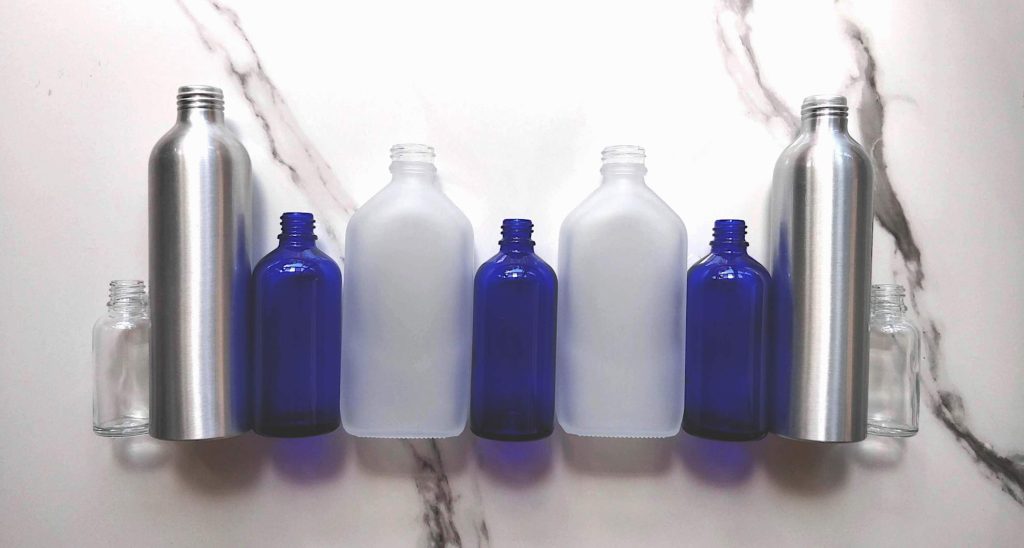There are several commonly used material options for skincare packaging that have varying degrees of sustainability:
Glass
Glass is completely recyclable and can be recycled indefinitely without deterioration in quality. It is also non-porous, which means it does not interact with the product inside and cannot be contaminated. However, because glass is heavy and fragile, it can be difficult and costly to transport, particularly for international shipping.
Plastic
Because plastic is lightweight and inexpensive, it is a popular material for skincare packaging. Some plastics, such as PET PVC and HDPE, are more easily recyclable than others, but plastic recycling remains low with 12% or less getting recycled. Glass can only be recycled up to 2-3 times. The majority of plastic produced is used once then ends up in landfill or oceans. Plastic is not biodegradable and can take hundreds of years to degrade in the environment. When plastic breaks down it creates microplastics which are harmful for marine life, get into the food chain and pollute oceans.
Bamboo
Bamboo is a sustainable and renewable resource that grows quickly and requires little water and pesticides to thrive. It is also biodegradable, making it a better choice for the environment than plastic. Bamboo, however, may not be appropriate for all types of products and packaging such as liquids or oils.
Aluminium
Aluminium is completely recyclable and can be recycled indefinitely without deterioration in quality. It is also lightweight and durable, making it an excellent sustainable choice for skincare packaging. However, aluminium production is energy-intensive and can have a negative impact on the environment if not properly managed. Due to its durability and light weight, aluminium is well-suited to a closed-loop system where it is made once then re-used again and again. This can mitigate the initial energy intensive production.
Paper or cardboard
Paper and cardboard are easily recyclable and generally biodegrade over time. While paper and cardboard make up a large proportion of landfill, if they are manufactured without harmful dyes or plastics, or are made to be compostable, they can be a sustainable packaging choice. This material choice of course is limited to powder-based skincare products, as paper can’t hold liquids.
What is the most sustainable option for skincare packaging?
In summary, there is no one “ideal” material for the most sustainable skincare packaging that is environmentally friendly in every way. The best option depends on the product type – liquid, balm, bar, or powder etc – and how it will be used and dealt with after use. When choosing packaging materials, consider the environmental impact of production and disposal, the ability to recycle or reuse the material, and product compatibility. Reuse of packaging should be prioritised over recycling, with single use and disposable packaging being the least sustainable option and durable, closed loop packaging the best choice.
To find sustainably packaged skincare check sustainability awards schemes such as the global Sustainability Award.
